Related Research Articles
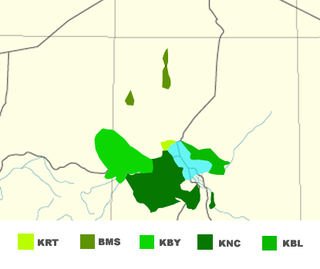
Kanuri is a Saharan dialect continuum of the Nilo–Saharan language family spoken by the Kanuri and Kanembu peoples in Nigeria, Niger, Chad and Cameroon, as well as by a diaspora community residing in Sudan.
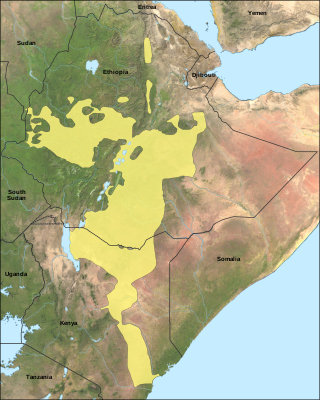
Oromo, historically also called Galla, which is regarded by the Oromo as pejorative, is an Afroasiatic language that belongs to the Cushitic branch. It is native to the Ethiopian state of Oromia and northern Kenya and is spoken predominantly by the Oromo people and neighboring ethnic groups in the Horn of Africa. It is used as a lingua franca particularly in the Oromia Region and northeastern Kenya.
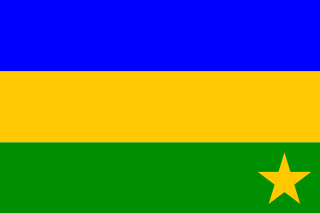
The Kanuri people are an African ethnic group living largely in the lands of the former Kanem and Bornu Empires in Niger, Nigeria, Chad, and Cameroon, as well as a diaspora community residing in Sudan. Those generally termed Kanuri include several subgroups and dialect groups, some of whom identify as distinct from the Kanuri. Most trace their origins to ruling lineages of the medieval Kanem–Bornu Empire, and its client states or provinces. In contrast to the neighboring Toubou or Zaghawa pastoralists, Kanuri groups have traditionally been sedentary, engaging in farming, fishing the Chad Basin, trade, and salt processing.

Laal is an endangered language isolate spoken by 749 people in three villages in the Moyen-Chari prefecture of Chad on opposite banks of the Chari River, called Gori (lá), Damtar (ɓual), and Mailao. It represents an isolated survival of an earlier language group of Central Africa. It is unwritten except in transcription by linguists. According to former Summer Institute of Linguistics-Chad member David Faris, it is in danger of extinction, with most people under 25 shifting to the locally more widespread Bagirmi.
The Tagoi language is a Kordofanian language, closely related to Tegali, spoken near the town of Rashad in southern Kordofan in Sudan, about 12 N, 31 E. Unlike Tegali, it has a complex noun class system, which appears to have been borrowed from more typical Niger–Congo languages. It has several dialects, including Umali (Tumale), Goy, Moreb, and Orig. Villages are Moreb, Tagoi, Tukum, Tuling, Tumale, Turjok, and Turum.

Supyire, or Suppire, is a Senufo language spoken in the Sikasso Region of southeastern Mali and in adjoining regions of Ivory Coast. In their native language, the noun sùpyìré means both "the people" and "the language spoken by the people".

Daza is a Nilo-Saharan language spoken by the Daza people inhabiting northern Chad and eastern Niger. The Daza are also known as the Gouran (Gorane) in Chad. Dazaga is spoken by around 700,000 people, primarily in the Djurab Desert region and the Borkou region, locally called Haya or Faya-Largeau northern-central Chad, the capital of the Dazaga people. Dazaga is spoken in the Tibesti Mountains of Chad, in eastern Niger near N'guigmi and to the north. It is also spoken to a smaller extent in Libya and in Sudan, where there is a community of 3,000 speakers in the city of Omdurman. There's also a small diaspora community working in Jeddah, Saudi Arabia.

The Saharan languages are a small family of languages across parts of the eastern Sahara, extending from northwestern Sudan to southern Libya, north and central Chad, eastern Niger and northeastern Nigeria. Noted Saharan languages include Kanuri, Daza, Teda, and Zaghawa. They have been classified as part of the hypothetical but controversial Nilo-Saharan family.
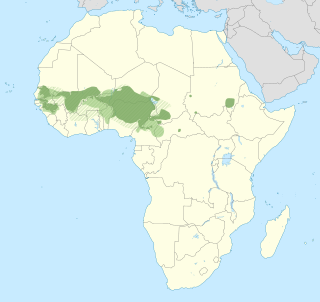
Fula, also known as Fulani or Fulah, is a Senegambian language spoken by around 36.8 million people as a set of various dialects in a continuum that stretches across some 18 countries in West and Central Africa. Along with other related languages such as Serer and Wolof, it belongs to the Atlantic geographic group within Niger–Congo, and more specifically to the Senegambian branch. Unlike most Niger-Congo languages, Fula does not have tones.
Kanembu is a Nilo-Saharan language spoken in Chad by the Kanembu people. It is also spoken by a smaller number of people in Niger. It is closely related to Kanuri.
The grammar of the Marathi language shares similarities with other modern Indo-Aryan languages such as Odia, Gujarati or Punjabi. The first modern book exclusively about the grammar of Marathi was printed in 1805 by Willam Carey.
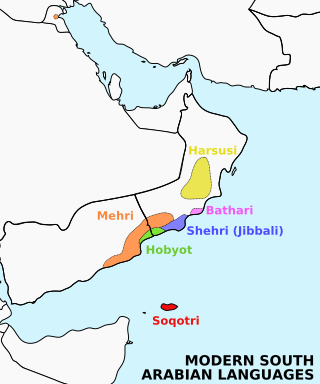
Shehri, also known as Jibbali, is a Modern South Arabian language; it and the three island varieties of Soqoṭri comprise the eastern branch of Modern South Arabian. It is spoken by a small native population inhabiting the coastal towns and the mountains and wilderness areas upland from Salalah, located in the Dhofar Governorate in southwestern Oman. The autonym for speakers is əḥklí, plural əḥkló.
Nepali grammar is the study of the morphology and syntax of Nepali, an Indo-European language spoken in South Asia.
Kulung is one of the Kiranti languages. It is spoken by an estimated 33,000 people. Van Driem (2001) includes Chukwa as a dialect.
The Otoro language is a Heiban language which belongs to the Kordofanian Languages and therefore it is a part of the Niger-Congo language family. In a smaller view the Otoro is a segment of the "central branch“ from the so-called Koalib-Moro Group of the languages which are spoken in the Nuba Mountains. The Otoro language is spoken within the geographical regions encompassing Kuartal, Zayd and Kauda in Sudan. The precise number of Otoro speakers is unknown, though current evaluates suggest it to be exceeding 17,000 people.
Yerwa Kanuri or Central Kanuri is a variety of the Kanuri language spoken mainly in adjacent parts of Nigeria, Niger, Cameroon, and Chad as well as by a diaspora community residing in Sudan. It is spoken by the Yerwa Kanuri who are the largest subgroup of Kanuri people in West and Central Africa today. Yerwa Kanuri is the largest of the Kanuri varieties, it is also used for both oral and written communication in Cameroon and is classified within the Saharan branch of the Nilo-Saharan language family. The Yerwa Kanuri variety of the Kanuri language in Nigeria is written using the Ajami script of the Arabic alphabet.
Manga Kanuri is a variety of the Kanuri language a Nilo-Saharan language of the Saharan branch. Manga Kanuri is spoken mainly in Niger in the regions of Zinder and Diffa along the Nigerian and Chadian borders. It also spoken by a significant number of speakers in Nigeria. Manga Kanuri is the second largest variety of the Kanuri language and is used as a trade language in Niger. It has two main dialects, Manga, and Dagara.
Bilma Kanuri is a variety of the Kanuri language which is a Nilo-Saharan language belonging to the Saharan branch of the language family. It is spoken in Niger mainly in the Agadez Region by the Bilma Kanuri subgroup, and is named after the town of Bilma. The variety is one of the smaller varieties of Kanuri in terms of the number of speakers.

Western Niger Fulfulde, also known as Gorgal Niiser Fulfulde is a variety of the Fula language, spoken mainly in Niger, and Burkina Faso, as well as by a small number of speakers in Benin by 3 million people. It has SOV word order and is closely related to other varieties of Fula spoken in Niger.
Borgu Fulfulde, also known as Borgu Fulani, Benin-Togo Fulfulde, Fulbe-Borgu, or Peul is a variety of the Fula language a West Atlantic language part of the Niger-Congo language family, it is spoken primarily in the Borgou Department of Benin, spanning Nigeria, other parts of Benin, as well as Togo and parts of Burkina Faso.
References
- ↑ Tumari Kanuri at Ethnologue (26th ed., 2023)

- ↑ "Kanuri, Tumari | Ethnologue Free".
- ↑ Kevin Anthony Jarrett and Maman Garba. 2004. Kanuri conjugation manual: bilma, dagara, mowor, manga, tumari. Niamey: Ministry of Basic Education and Literacy. 458pp.